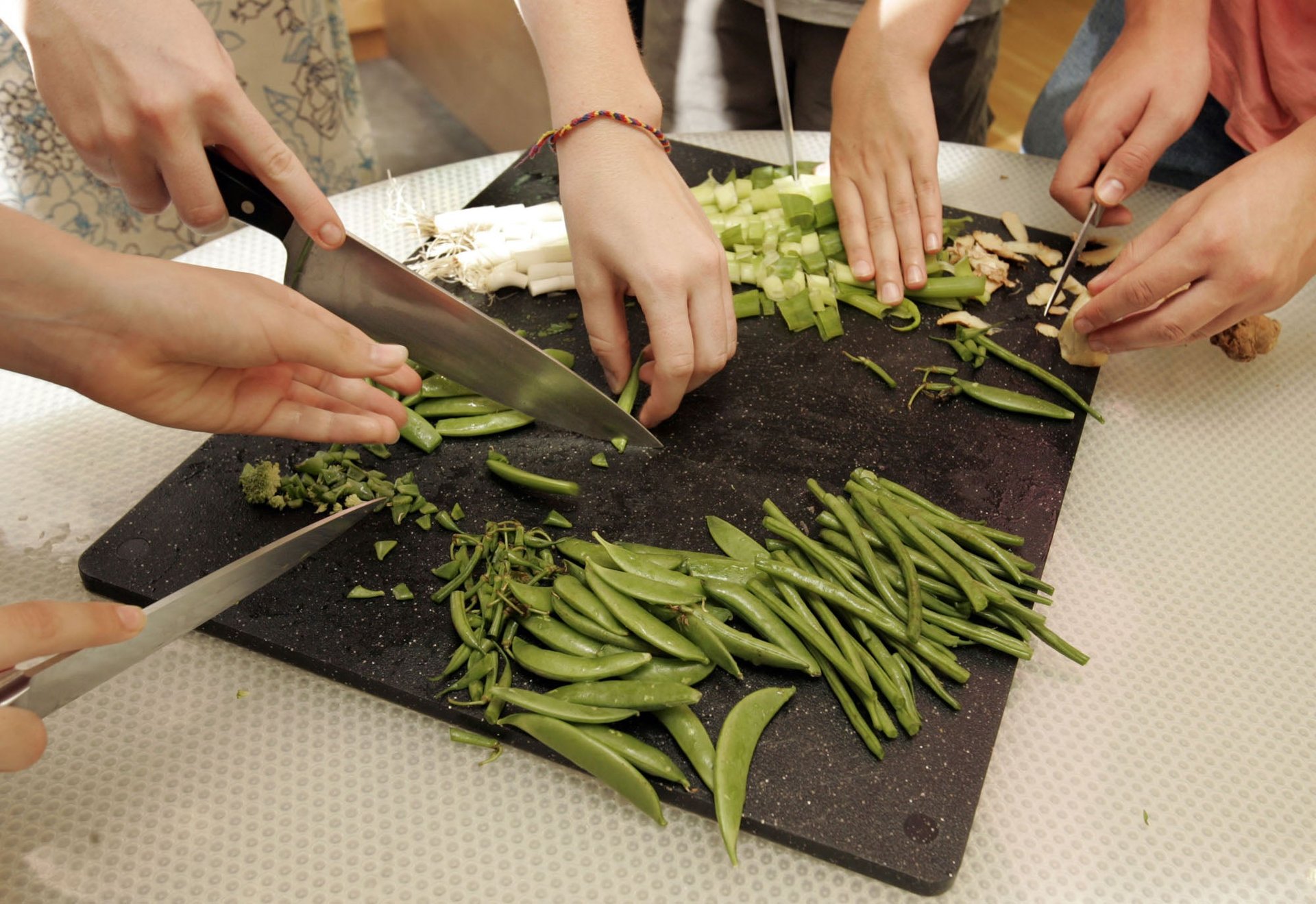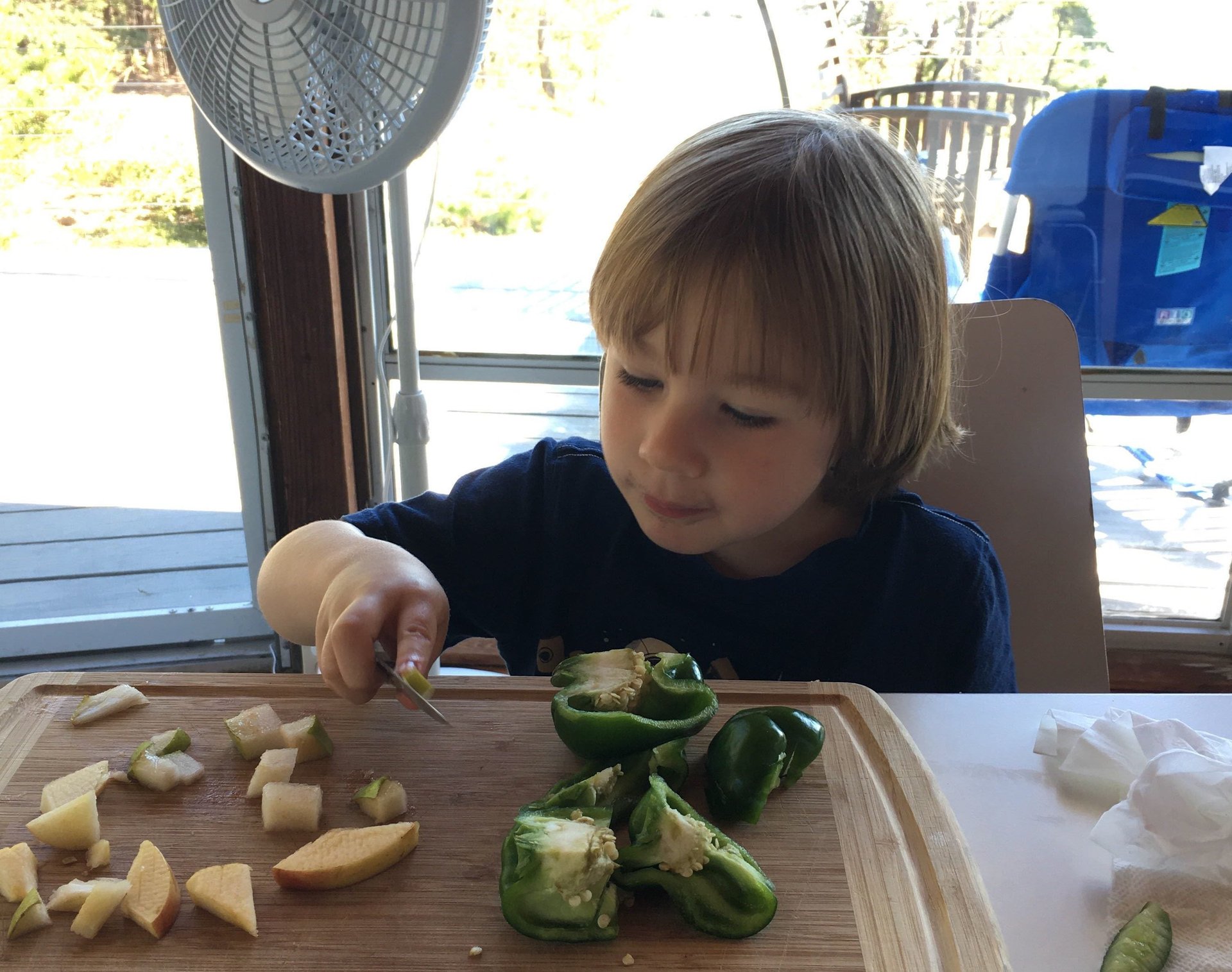The world-changing power of getting boys in the kitchen
In my house, cooking is rarely a solitary endeavor. While both my husband and I love to cook, he’s the one who plans and prepares most of our meals, usually with the enthusiastic assistance of our four-year-old son. On the nights when I cook, our son is just as involved, dragging a chair next to wherever I’m standing. He’s an excellent mixer, and eager to be allowed more access to knives.


In my house, cooking is rarely a solitary endeavor. While both my husband and I love to cook, he’s the one who plans and prepares most of our meals, usually with the enthusiastic assistance of our four-year-old son. On the nights when I cook, our son is just as involved, dragging a chair next to wherever I’m standing. He’s an excellent mixer, and eager to be allowed more access to knives.
Learning to cook is one of the most practical life skills a parent could hope to teach a child. But a recent Pew Research Center analysis of data from the Bureau of Labor Statistics shows that teenage girls are getting a lot more time in the kitchen than their male peers. While teen girls spend 29 minutes a day preparing and cleaning up after meals, boys spend just 12. Girls also spend 21 minutes a day running errands including grocery shopping, compared to just 11 for boys.
We’ve got to get those boys in the kitchen—both for their own sake, and for the sake of their future families.
For one thing, there are clear health and nutrition benefits to getting boys involved in the process of cooking. Children feel more invested in what they eat when they’re active participants, whether because they helped grow the ingredients, as with with Alice Waters’ nonprofit Edible Schoolyard, or because they helped make the food, as with Michelle Obama’s Let’s Move campaign. Studies have shown that cooking instruction has a positive effect on the way children choose healthy foods and that people with better cooking skills also eat more vegetables and less highly processed food.
Moreover, cooking, as much of a drag as it can be when you have to get dinner on the table every night, is a creative act. Getting boys involved in cooking gives them the opportunity to master a variety of skills, from making scrambled eggs to ensuring that pastries come out delicate and crisp. At a time when many parents worry about their kids spending too much time on screens, handing over one night of meal-planning and prep to a teenage boy each week can be a way to help them feel more engaged and empowered in the offline world.
Then there’s the issue of gender equality. Women still do more household labor in the US, and handle much of the emotional labor to boot—the high-level planning and thoughtful care that makes a home run smoothly. Cooking is just one of many opportunities to help boys tip that balance.

“We were all born with a similar aptitude for emotional labor, but only half of us were trained in it as we grew up,” writes Gemma Hartley in Fed Up, her book about emotional labor. While the act of cooking in itself is straight-up domestic—not emotional—labor, planning a meal for your family, especially cooking for a special occasion while keeping in mind individual preferences and dietary needs, definitely is.
Hartley’s book doesn’t just identify emotional labor as a set of tasks that disproportionately fall to women. She dives deep into why emotional labor is so important, and for many, so central to their identities as mothers, wives, sisters, and friends. What she finds is that the act of thinking about the needs of others, the work of care, is as profoundly gratifying as it is exhausting. She contends that teaching adult men to be better partners in this way is a net good for everyone. “They may, with time and practice, find the value in it as it opens a new side of the world to them, a new human wholeness that can help them feel more connected to their lives,” she writes. Getting boys into the kitchen could be a step toward teaching them to value taking care of others as adults—one lovingly prepared dinner at a time.